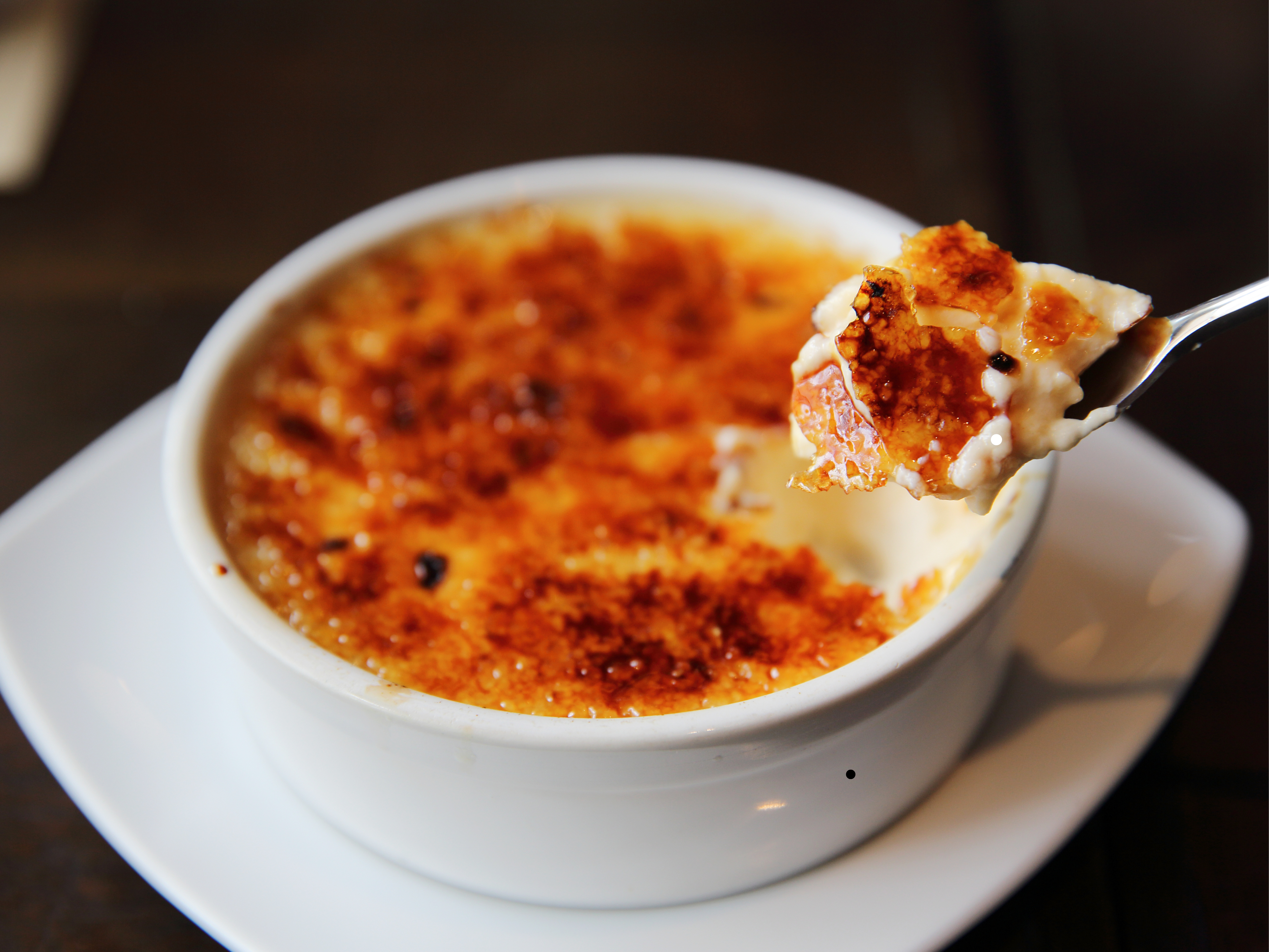Crème brûlée is a dessert loved for its luxurious combination of creamy custard and crackly caramelized sugar topping. This French classic has a delicate flavor profile with subtle sweetness, rich vanilla notes, and a hint of bitterness from the sugar crust. If you’ve ever wondered what crème brûlée tastes like, this guide breaks down its key flavors and textures.
For a deeper exploration of custard-based desserts, visit Flan vs Crème Brûlée: What’s the Difference?.
The Custard Base: Creamy and Vanilla-Infused
The custard base of crème brûlée is:
- Silky and Rich: Made from heavy cream, egg yolks, and sugar, it delivers a smooth, melt-in-your-mouth texture.
- Vanilla-Forward: Traditional crème brûlée is infused with vanilla beans or extract, creating warm and aromatic notes.
For tips on enhancing custard flavors, check out How to Flavor Custards.
The Caramelized Sugar Topping: Crunchy and Nutty
The caramelized sugar topping is what sets crème brûlée apart. This thin, crackly layer:
- Adds a slightly bitter, nutty flavor that balances the sweetness of the custard.
- Provides a textural contrast that enhances the overall dessert experience.
To learn how to master the caramelization process, explore How to Caramelize Crème Brûlée.
Textural Contrast: The Perfect Bite
One of the most appealing aspects of crème brûlée is how its textures work together. The crunch of the sugar crust gives way to the soft, creamy custard below, creating a multi-sensory experience that makes every bite memorable.
Popular Variations and Flavor Twists
While vanilla is the classic flavor, modern variations of crème brûlée have expanded its taste possibilities:
- Matcha: Adds an earthy bitterness to the creamy base.
- Lavender: Introduces light floral notes for a fragrant twist.
- Chocolate or Coffee: Brings depth and richness to the dessert.
For pairing suggestions with wine or coffee, explore Perfect Dessert Pairings.
What Defines Crème Brûlée’s Flavor?
Crème brûlée achieves its iconic taste through a combination of:
- Silky Custard Base: The custard is smooth, creamy, and rich, offering a subtle sweetness. Vanilla is traditionally the star flavor, providing a warm and aromatic base. Variations can include chocolate, citrus, or liqueurs for added complexity.
- Caramelized Sugar Crust: The top layer introduces a slightly bitter, nutty flavor that contrasts beautifully with the custard’s sweetness.
For creative spins on brûlée recipes, explore the Crab Brûlée Recipe: A Luxurious Culinary Experience.
How the Topping Enhances the Flavor
The caramelized sugar crust not only adds texture but also deepens the overall flavor. As sugar melts and browns, it develops rich, toasty notes that balance the dessert’s creamy sweetness. Breaking through this layer is both satisfying and essential to the experience.
FAQs About Crème Brûlée’s Taste
1. Is crème brûlée overly sweet?
No, crème brûlée balances its sweetness with the slight bitterness of caramelized sugar, making it rich but not overwhelming.
2. Can crème brûlée flavors be customized?
Yes, you can experiment with flavors like lavender, matcha, or espresso for a modern twist on the classic.
3. How is crème brûlée different from other custards?
Its caramelized sugar topping creates a unique combination of crunchy and creamy textures, setting it apart from desserts like flan.
Related Recipes and Inspiration
- What’s the Difference Between Crème Brûlée and Custard?: Explore how crème brûlée’s flavors and textures stand out.
- How to Caramelize Brûlée: Learn the techniques for creating the perfect caramelized crust.
- Vegetarian Thanksgiving Main Dishes: Pair your dessert with a festive main course.
Crème brûlée is a dessert that combines smooth sweetness with a touch of toasty crunch. Its balance of flavors and textures makes it a timeless favorite for any occasion. Whether you enjoy the traditional vanilla version or experiment with unique flavors, each bite of crème brûlée is sure to delight.

